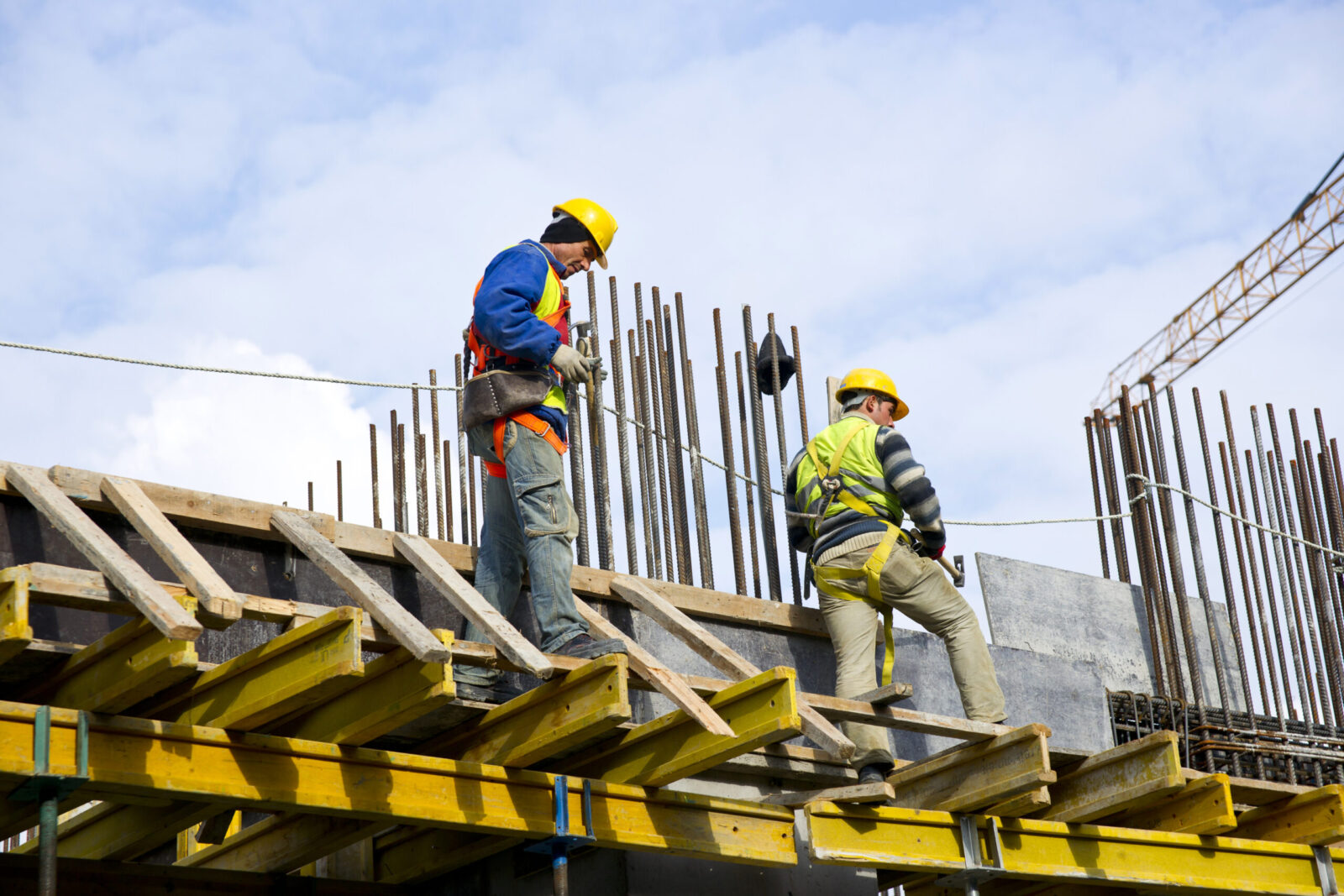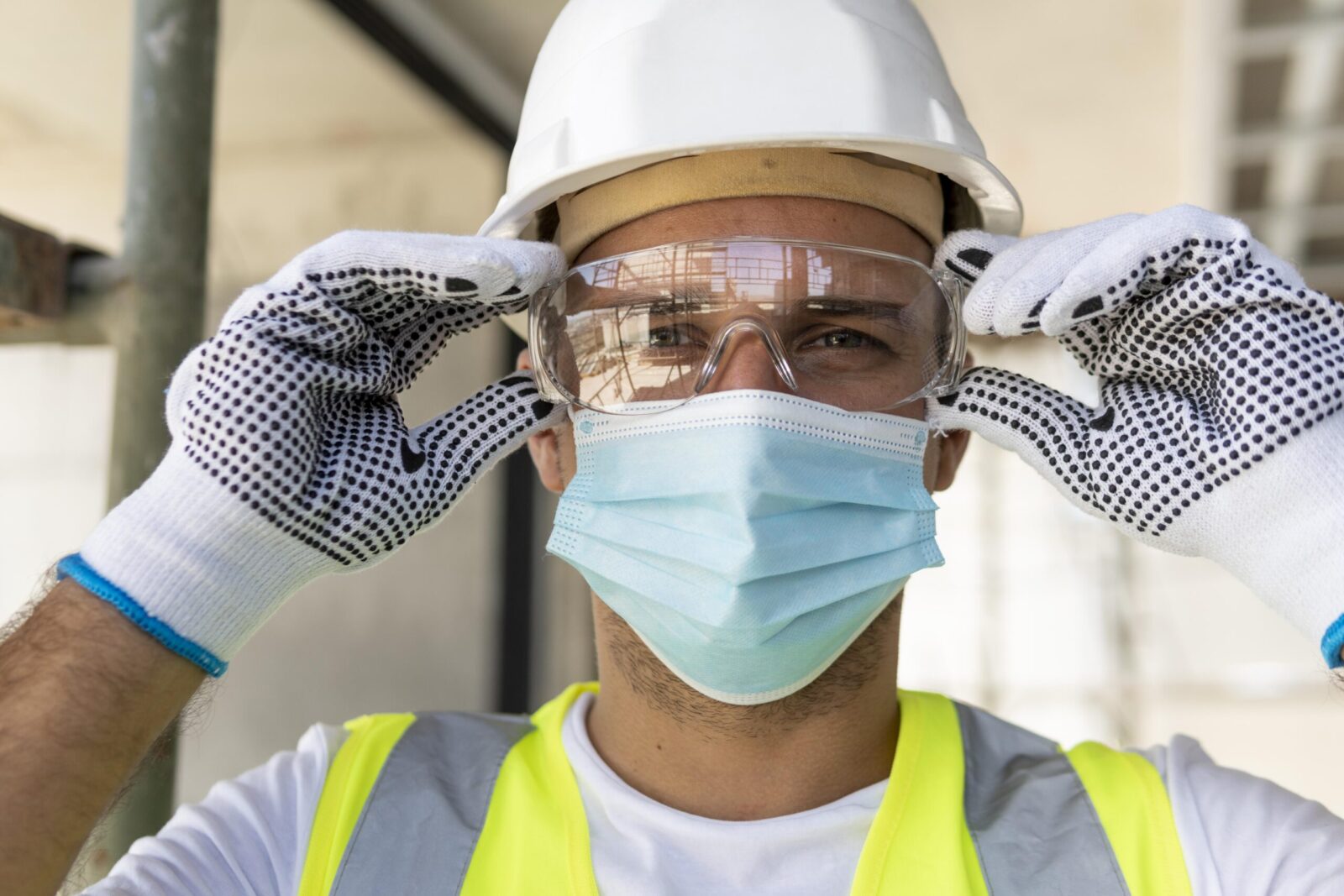
Essential PPE in the Food Industry: What You Need to Know
Overwhelmed by PPE options for food safety? Master your PPE selection for food workers safety with these practical tips.

Get 20€ off on your first order!
Finding the right work jacket enhances comfort and efficiency on construction sites, helping you stay prepared for demanding physical tasks and varying weather conditions. In this guide, you’ll discover how to choose the perfect jacket tailored for construction, ensuring maximum comfort, safety, and durability on-site.
With our expertise in workwear, we promise to address all your questions and guide you to the ideal solution for your needs—and help you navigate your next challenge of optimizing complementary gear like pants and safety shoes.
For an overarching view of choosing work outerwear, don’t miss our Work Jackets: Selecting the Right Outerwear.

When selecting a jacket for construction, you should prioritize specific features tailored to your work environment. Here’s what to look for:
Construction sites can be tough on clothing. Look for jackets made from robust materials like polyester blends or ripstop fabrics. Reinforced stitching and abrasion-resistant patches at stress points can extend the jacket’s lifespan.
Explore options like Winter Work Jackets for more specialized solutions.
Construction work often requires intense physical effort. A breathable jacket will help regulate your temperature, preventing overheating while allowing sweat to evaporate.
European safety standards provide the assurance of enhanced protection and reliability, ensuring that your construction jacket meets the highest benchmarks for workplace safety. Here are the key standards to consider:
By choosing jackets certified to these standards, you can feel empowered and confident to tackle any construction challenge while benefiting from enhanced safety and reliability. Explore Hi-Vis Jackets and Fire-Resistant Jackets.
Depending on your specific needs, different types of jackets cater to varying conditions. Here’s a quick comparison:
| Jacket Type | Best For | Key Features |
| Winter Work Jackets | Cold weather | Thermal insulation, windproof |
| Hi-Vis Jackets | Low-light environments | Reflective strips, bright colors |
| Fire-Retardant Jackets | Work near heat sources (e.g., welding) | Fire-resistant materials, lightweight design |
| Waterproof Jackets | Rainy conditions | Sealed seams, breathable waterproofing |
For a deeper dive into these categories, explore our main product selection.
A properly fitting jacket is crucial for both comfort and performance.
Check out our guide on How to Choose the Right Work Pants for complementary workwear advice.
To ensure your jacket lasts through seasons of hard work, follow these maintenance tips:
For detailed care instructions, read Caring for Your Work Jacket: Cleaning and Maintenance Tips.
Construction often requires layering for fluctuating temperatures. Choose jackets with adjustable features, like zip-out liners or removable hoods, for added versatility.
Investing in a high-quality jacket offers unmatched durability, long-term savings, and the confidence of reliable performance, making it a smart choice for demanding construction environments.
Ensure your jacket accommodates additional gear such as harnesses, helmets, or gloves. For example, safety shoes often pair well with durable jackets; see our Safety Shoes Buying Guide.
Ready to choose the right jacket? Browse our extensive selection of Work Jackets here. Whether you need a hi-vis jacket or a fire-retardant option, we’ve got you covered. Explore related categories such as:
We hope this guide has helped you identify the key factors in choosing the best work jacket for construction, from understanding material durability to ensuring year-round comfort and safety. By following this advice, you can confidently select a jacket that meets your needs and supports your productivity on-site.
Ready to explore more options or find solutions for complementary gear like safety shoes or rain pants? Check out our full range of Work Jackets and other workwear essentials. Still have questions? Our team is always here to assist, ensuring you’re equipped with the best gear for every challenge ahead.
While the article advises against over-washing, a good rule of thumb is to clean your jacket only when visibly dirty or when it develops odors. This could vary based on your work environment but is typically every 2-4 weeks for moderate use.
Ironing may damage technical fabrics or special coatings like flame retardance or waterproofing. Instead, hang the jacket in a steamy bathroom to release wrinkles or use a garment steamer if needed.
For oil or grease stains, pre-treat the affected area with a degreasing detergent or mild dish soap before washing. Avoid using hot water, as it may set the stain.
Yes, you can use biodegradable detergents or natural stain removers, such as baking soda or white vinegar, for an eco-friendly approach. Be cautious with these methods if your jacket has specialized coatings; check the care label first.
Ensure your jacket is completely dry before storage. Use a breathable garment bag and place silica gel packets or a small dehumidifier in the storage area to prevent moisture buildup and mold.
Thank you! You've signed up for our newsletter.



















Overwhelmed by PPE options for food safety? Master your PPE selection for food workers safety with these practical tips.

Electricians across Europe face unique challenges that require reliable safety glasses to ensure both protection and efficiency. Whether safeguarding against...

Struggling to maintain clear vision in demanding environments? This guide is here to help. By the end, you’ll know exactly...

Overwhelmed by PPE options for food safety? Master your PPE selection for food workers safety with these practical tips.

Electricians across Europe face unique challenges that require reliable safety glasses to ensure both protection and efficiency. Whether safeguarding against...

Struggling to maintain clear vision in demanding environments? This guide is here to help. By the end, you’ll know exactly...
Get 20€ off on your first order!
Save 30% by buying directly from brands, and get an extra 10€ off orders over €100
Save 30% by buying directly form brands, and get an extra 10€ off orders over €100